Shovan Maity
A Quantitative Analysis of Physical Security and Path Loss With Frequency for IBOB Channel
Apr 27, 2022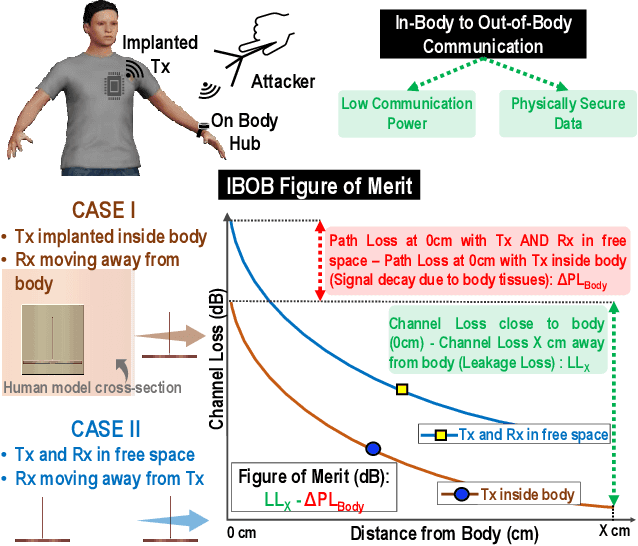
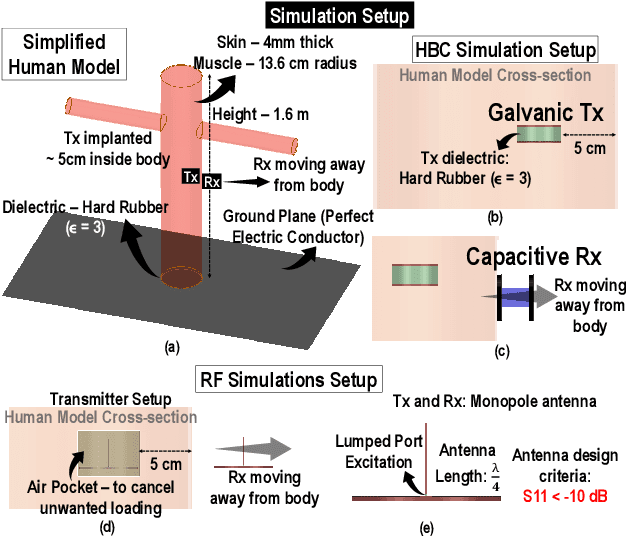

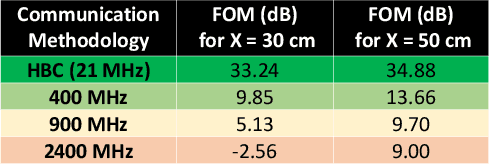
Abstract:Security vulnerabilities demonstrated in implantable medical devices have opened the door for research into physically secure and low power communication methodologies. In this study, we perform a comparative analysis of commonly used ISM frequency bands and human body communication (HBC) for data transfer from in-body to out-of-body (IBOB). We develop a figure of merit (FoM) that comprises of the critical parameters to quantitatively compare the communication methodologies. We perform finite-element method (FEM)-based simulations and experiments to validate the FoM developed.
RF-PUF: Enhancing IoT Security through Authentication of Wireless Nodes using In-situ Machine Learning
Jun 19, 2018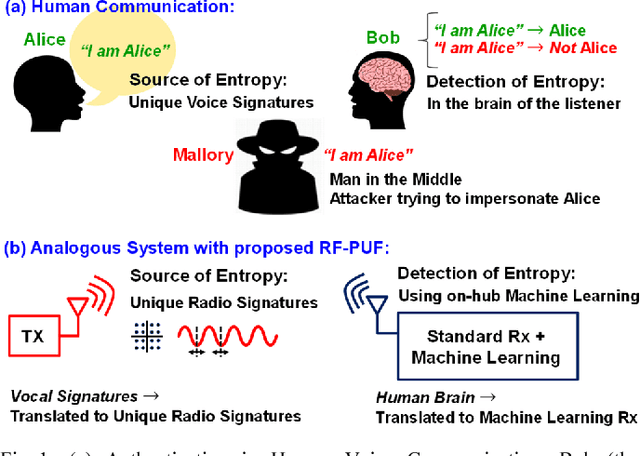
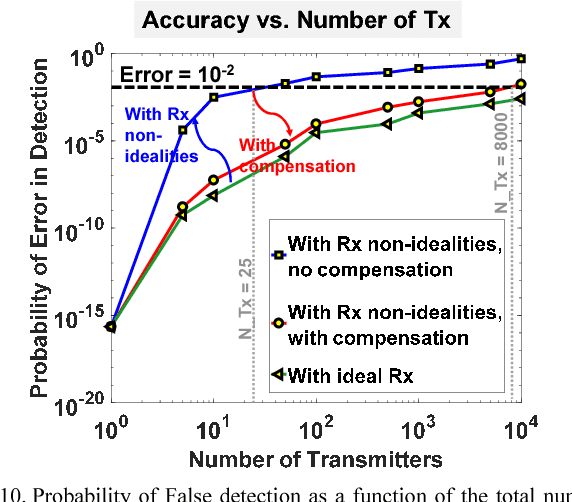
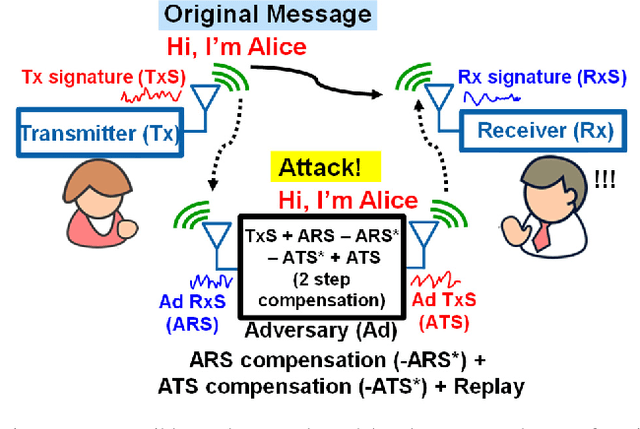
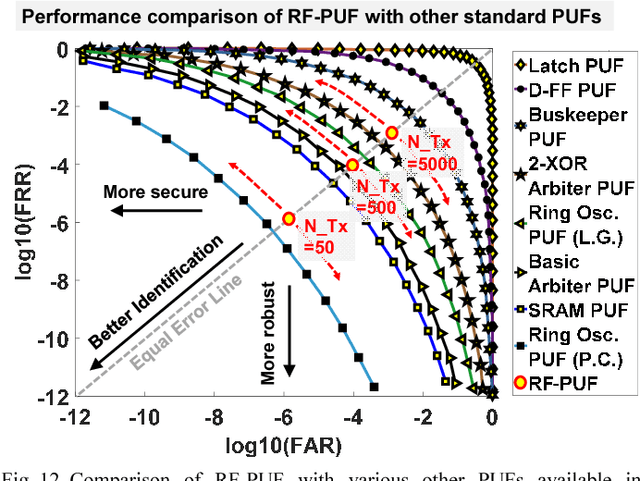
Abstract:Traditional authentication in radio-frequency (RF) systems enable secure data communication within a network through techniques such as digital signatures and hash-based message authentication codes (HMAC), which suffer from key recovery attacks. State-of-the-art IoT networks such as Nest also use Open Authentication (OAuth 2.0) protocols that are vulnerable to cross-site-recovery forgery (CSRF), which shows that these techniques may not prevent an adversary from copying or modeling the secret IDs or encryption keys using invasive, side channel, learning or software attacks. Physical unclonable functions (PUF), on the other hand, can exploit manufacturing process variations to uniquely identify silicon chips which makes a PUF-based system extremely robust and secure at low cost, as it is practically impossible to replicate the same silicon characteristics across dies. Taking inspiration from human communication, which utilizes inherent variations in the voice signatures to identify a certain speaker, we present RF- PUF: a deep neural network-based framework that allows real-time authentication of wireless nodes, using the effects of inherent process variation on RF properties of the wireless transmitters (Tx), detected through in-situ machine learning at the receiver (Rx) end. The proposed method utilizes the already-existing asymmetric RF communication framework and does not require any additional circuitry for PUF generation or feature extraction. Simulation results involving the process variations in a standard 65 nm technology node, and features such as LO offset and I-Q imbalance detected with a neural network having 50 neurons in the hidden layer indicate that the framework can distinguish up to 4800 transmitters with an accuracy of 99.9% (~ 99% for 10,000 transmitters) under varying channel conditions, and without the need for traditional preambles.
Exploiting Inherent Error-Resiliency of Neuromorphic Computing to achieve Extreme Energy-Efficiency through Mixed-Signal Neurons
Jun 13, 2018



Abstract:Neuromorphic computing, inspired by the brain, promises extreme efficiency for certain classes of learning tasks, such as classification and pattern recognition. The performance and power consumption of neuromorphic computing depends heavily on the choice of the neuron architecture. Digital neurons (Dig-N) are conventionally known to be accurate and efficient at high speed, while suffering from high leakage currents from a large number of transistors in a large design. On the other hand, analog/mixed-signal neurons are prone to noise, variability and mismatch, but can lead to extremely low-power designs. In this work, we will analyze, compare and contrast existing neuron architectures with a proposed mixed-signal neuron (MS-N) in terms of performance, power and noise, thereby demonstrating the applicability of the proposed mixed-signal neuron for achieving extreme energy-efficiency in neuromorphic computing. The proposed MS-N is implemented in 65 nm CMOS technology and exhibits > 100X better energy-efficiency across all frequencies over two traditional digital neurons synthesized in the same technology node. We also demonstrate that the inherent error-resiliency of a fully connected or even convolutional neural network (CNN) can handle the noise as well as the manufacturing non-idealities of the MS-N up to certain degrees. Notably, a system-level implementation on MNIST datasets exhibits a worst-case increase in classification error by 2.1% when the integrated noise power in the bandwidth is ~ 0.1 uV2, along with +-3{\sigma} amount of variation and mismatch introduced in the transistor parameters for the proposed neuron with 8-bit precision.
An Energy-Efficient Mixed-Signal Neuron for Inherently Error-Resilient Neuromorphic Systems
Oct 24, 2017

Abstract:This work presents the design and analysis of a mixed-signal neuron (MS-N) for convolutional neural networks (CNN) and compares its performance with a digital neuron (Dig-N) in terms of operating frequency, power and noise. The circuit-level implementation of the MS-N in 65 nm CMOS technology exhibits 2-3 orders of magnitude better energy-efficiency over Dig-N for neuromorphic computing applications - especially at low frequencies due to the high leakage currents from many transistors in Dig-N. The inherent error-resiliency of CNN is exploited to handle the thermal and flicker noise of MS-N. A system-level analysis using a cohesive circuit-algorithmic framework on MNIST and CIFAR-10 datasets demonstrate an increase of 3% in worst-case classification error for MNIST when the integrated noise power in the bandwidth is ~ 1 {\mu}V2.
A Simple Flood Forecasting Scheme Using Wireless Sensor Networks
Mar 09, 2012
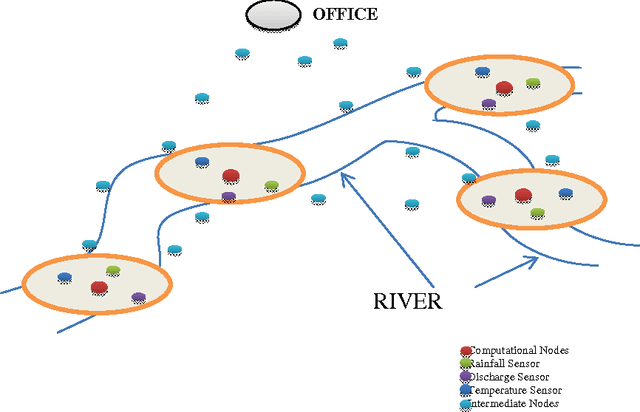
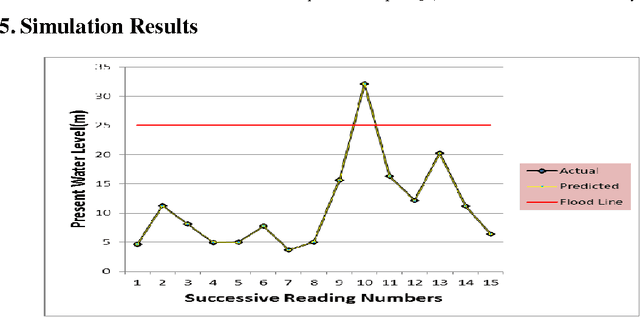
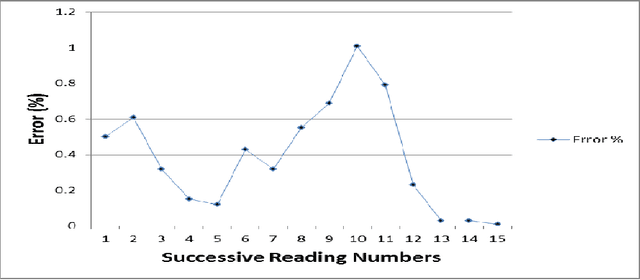
Abstract:This paper presents a forecasting model designed using WSNs (Wireless Sensor Networks) to predict flood in rivers using simple and fast calculations to provide real-time results and save the lives of people who may be affected by the flood. Our prediction model uses multiple variable robust linear regression which is easy to understand and simple and cost effective in implementation, is speed efficient, but has low resource utilization and yet provides real time predictions with reliable accuracy, thus having features which are desirable in any real world algorithm. Our prediction model is independent of the number of parameters, i.e. any number of parameters may be added or removed based on the on-site requirements. When the water level rises, we represent it using a polynomial whose nature is used to determine if the water level may exceed the flood line in the near future. We compare our work with a contemporary algorithm to demonstrate our improvements over it. Then we present our simulation results for the predicted water level compared to the actual water level.
 Add to Chrome
Add to Chrome Add to Firefox
Add to Firefox Add to Edge
Add to Edge